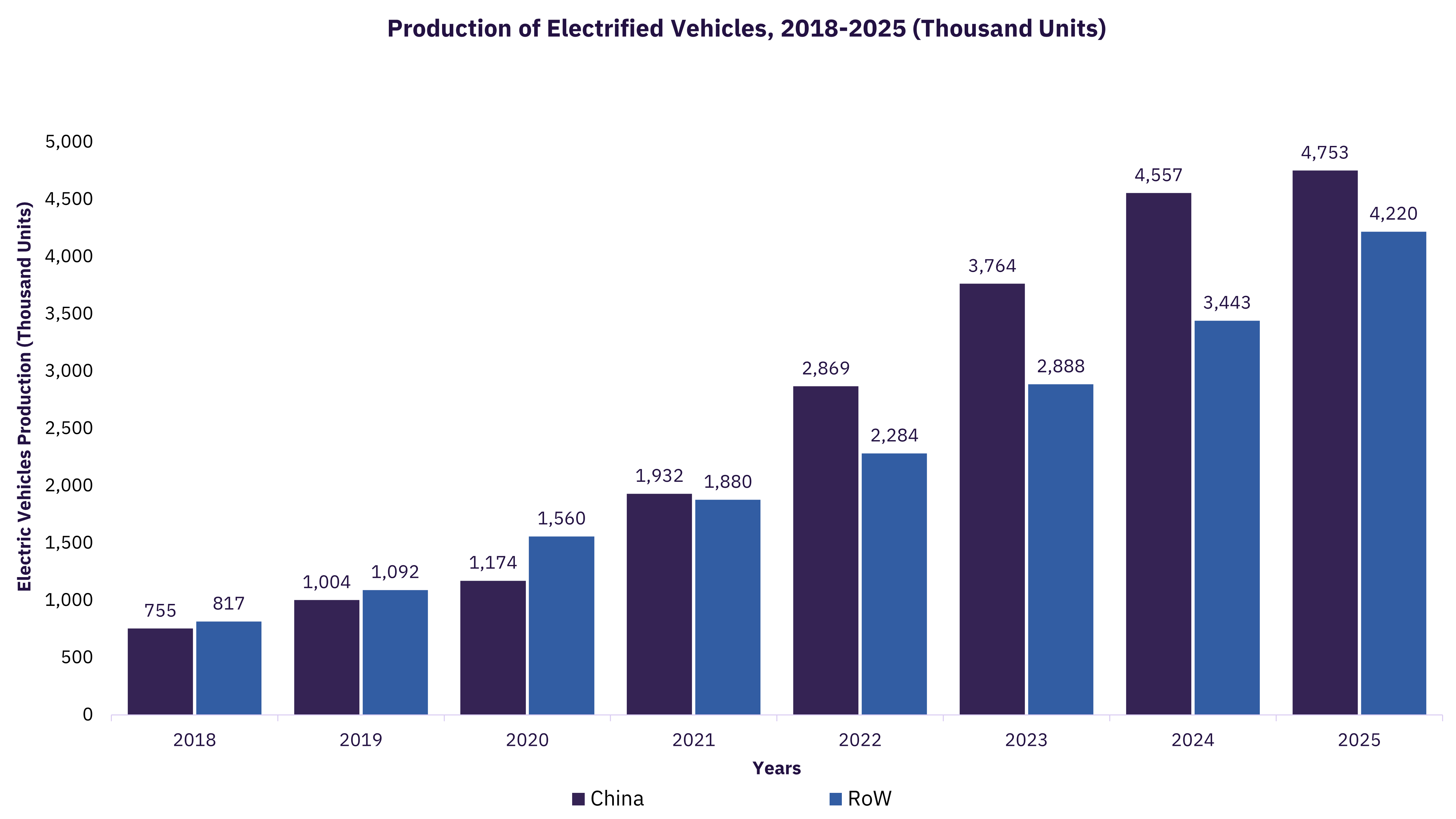China to End EV Subsidies After 30% Cut in 2022
-
China’s plan remains intact, cuts new energy vehicle (NEV) subsidy by 30% in 2022
-
Completely scraps out EV subsidy by end of 2022
-
EV production volume expected to reach 4.75 million units by 2025
China to End EV Subsidies After 30% Cut in 2022

China will go ahead with its plans to reduce subsidies for the purchase of new-energy vehicles (NEVs) by 30% in 2022, four central ministries announced recently. According to the policy document, the subsidies will be completely withdrawn at the end of the year.
In April 2020, Beijing announced that subsidies will be reduced from 2020 to 2022 by 10%, 20%, and 30%, respectively, for private NEVs and by 10 % in 2021 and 20% in 2022 for public transport. NEV is the Chinese terminology for a category of vehicles - purely battery EVs, plug-in hybrid vehicles, and hydrogen fuel-cell EVs.
Dramatic Rise of the Chinese EV Industry
To reduce greenhouse gas (GHG) emissions and huge dependence on oil imports, China promoted policies to encourage the adoption of EVs. Heavy subsidies were introduced in 2009 to bring the purchase cost of EVs at par with a conventional internal combustion vehicle. This propelled the surge in EV sales from a few hundred units to 1.5 million in 2020. It also helped local manufacturers such as Geely, Li Auto, Nio, and XPeng to contend in the global auto market.
History of Chinese EV Subsidies
After a decade of heavy subsidies and increasing sales, Beijing planned to phase out the subsidies. In 2015, the government announced that it would phase out direct subsidies by the end of 2020. However, the government planned to move from direct subsidies to a market-based approach following a major subsidy scandal in 2016. Starting in 2018, car manufacturers were mandated to obtain a certain number of credits every year to avoid financial penalties. To encourage technological development, the criteria to earn credits and qualify for subsidies became stringent with each passing year.
However, in April 2020, Beijing extended the subsidies by two years to the end of 2022 to support the automobile sector during an unexpected downturn, which worsened due to the COVID-19 pandemic. The NEV market recovered with a 17% growth in EV sales in 2020 after a 2% decline in 2019.
Will the China EV Market Slow Down?
Since 2021, automakers have been affected by shortage of chips. This, combined with lower subsidies, could increase the price of EVs. The 30% reduction in NEV subsidies this year alone could result in an increase in the purchase price by thousands of RMB. For instance, Tesla recently hiked the prices by 6% for the Model 3 and 9% for the Model Y. But local manufacturers such as XPeng and Nio adopted a more balanced approach – by either absorbing the subsidy loss or by ending favorable credit schemes for prospective buyers.
However, increasing consumer appetite for EVs is likely to offset the effect of the withdrawal of subsidies. GlobalData estimates that Chinese production of electrified vehicles increased 128% in 2021 and is expected to increase 42% in 2022 with 4.75 million units. The Chinese government continued to maintain its target of NEVs accounting for at least 20% of all automobile sales in the country by 2025.
Related Data & Insights
Related Companies
Germany
Japan
Netherlands
United States of America
United States of America
Germany
Germany
Japan
South Korea
China
Don’t wait - discover a universe of connected data & insights with your next search. Browse over 28M data points across 22 industries.
Access more premium companies when you subscribe to Explorer